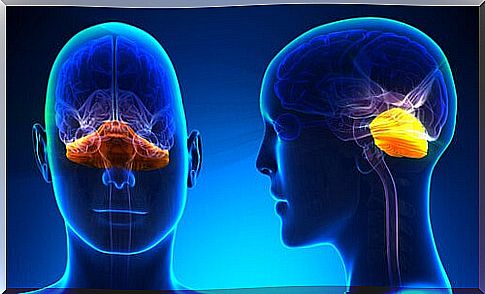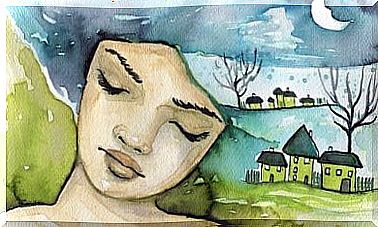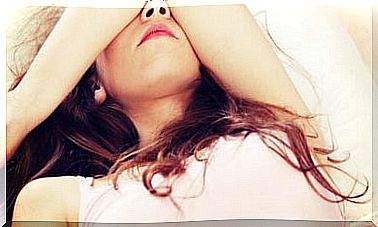Ataxia: Symptoms, Causes And Treatment

There are many agents that can condition our health and, by extension, our quality of life. Have you ever thought that movement can also be affected? There is a very characteristic clinical sign in this regard: ataxia. In ataxia there is a movement disorder. Then, coordination, posture and voluntary control of this fail, among other deficits that are acquired.
We are talking about a condition that consists of the lack of muscle control to perform movements. It can occur for various reasons. Next, we will tell you what it is about, what are its causes, the diagnosis and the treatment.
What is ataxia?
The word ataxia comes from ancient Greek and means “without order.” It consists of an alteration in the coordination of all types of movement. And, in the absence of paralysis. Ataxia can affect gait, trunk, limbs, or any combination of these. In addition, it can be evidenced in the following symptoms:
- Nystagmus Unintentional uncontrollable movement of the eyes.
- Dysarthria Difficulty articulating sounds and words.
- Hypotonia Decreased muscle tension or tone.
- Dismetria. Impairment that prevents the subject from performing a motor act that adjusts to the distance demanded.
- Disdiadocoscinecia. Inability to quickly perform alternating movements.
- Dysphagia Swallowing problems
- Difficulty in the march . And even total loss of ability to walk.
- Lack of coordination. And, difficulty for precision.
- Cognitive alterations. That is, at the level of thought.
- Emotional disturbances. It causes emotional instability, due to the difficulty in assuming the disease and due to the affected areas.
Ataxia can occur within another disease, such as multiple sclerosis, or it can occur in isolation, although this happens infrequently. Now, ataxia is not exclusive to adulthood. In fact, according to epidemiological studies suggested by Salman (2007) in the journal The Cerebellum , an estimated prevalence of cerebellar ataxias of 26/100000 in children in Europe.

What are the causes of ataxia?
The origins of ataxia can be diverse, because as we mentioned previously, it is not a disease in itself, but a clinical sign. Look at some of its possible causes:
- Acquired Ataxias. It occurs due to some pathology that the patient has. They can be of various roots:
- Toxic. As for example due to carbon monoxide or alcoholic cerebellar degeneration.
- Autoimmune. This is where gluten ataxia enters, and that related to subacute paraneoplastic cerebellar degeneration.
- Nutritional deficits. Such as vitamin E deficiency, Wernicke syndrome, and subacute combined degeneration.
- Neurodegenerative diseases. For example, multiple sclerosis, spinocerebellar ataxia, and those due to cerebrovascular diseases.
- Tumors Tumors such as medulloblastoma, astrocytoma, and hemangioblastoma can cause ataxic tumors.
- Genetic Ataxias. They are usually of early onset, since they are inherited ataxias. They can be autosomal recessive or dominant.
- Recessive The most common is Friedrich’s, in which there is neurodegeneration in the ganglion cells of the dorsal root, the spinocerebellar and corticospinal tracts, and the dentate nucleus.
- Dominant. Depending on the course of the disease, they can be episodic or progressive. Among the dominant ataxias we find: spinocerebellar ataxias, congenital cerebellar ataxia and cerebellar aplasia vermin syndrome, among others.
As you can see there are different types of ataxias, what do not exist are cures, but there are treatments that help the person to be better in the context in which they are.

Diagnosis of ataxia
There are different tests that help diagnose ataxia :
- Finger-nose. The patient is asked to touch his nose with the upper limb with the tip of the index finger. You are then asked to touch the examiner’s index.
- Heel-knee. The patient must be in the supine-decubitus position. After placing the heel on the knee of the other limb, you are asked to slide it down on the tibial ridge. This is done with the eyes open and closed, and with both limbs.
- Quick alternating exercises. The patient is asked to rotate both hands simultaneously, one way and the other.
- Electromyogram. It is a nerve conduction study.
- Psychodiagnosis. Neuropsychological studies to evaluate the executive functions of the patient.
These are some of the tests that are performed in evaluating ataxia. Its administration facilitates the evaluation by the professional, trained to interpret the results of these tests.
Ataxia treatments
The treatment of ataxia are limited and are not specific for the disease. Even so, there are treatments that can be directed at the cause, such as tumors and strokes. So, treatments tend to be more aimed at rehabilitation. Thus, the person will be able to adapt more easily to their environment with this clinical sign.
In addition, psychological intervention is important to achieve an essential objective: that the patient understands what is happening to him and learns to manage the emotions and thoughts that he generates around his condition. In addition, we are talking about an intervention that also has to be aimed at ensuring that their caregivers also know how to do it.









